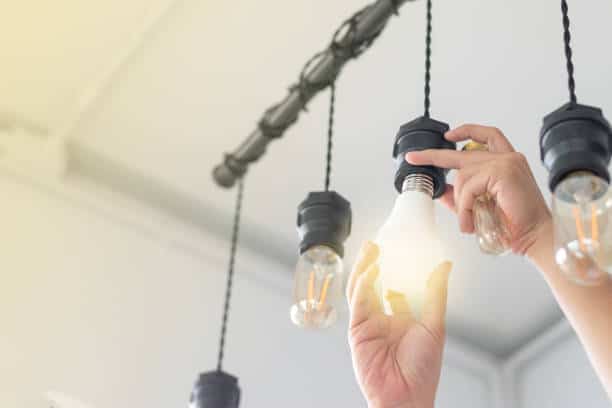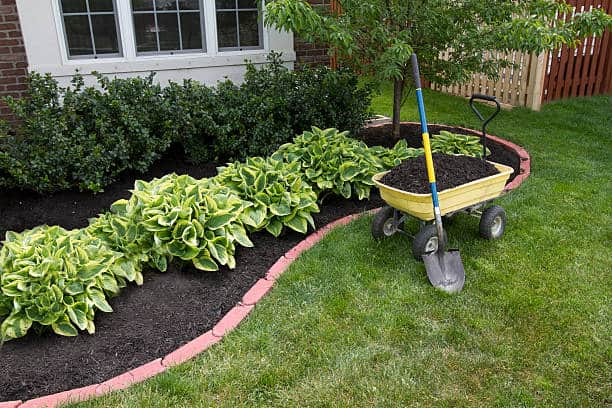20 Effective Strategies for Saving Energy Without Losing Comfort


Managing energy costs is a big worry for many households as prices keep going up. Many people hesitate to make changes because they don’t want to lose comfort, but saving energy can be done without changing your lifestyle.
Research shows the average American home spends about $2,000 a year on energy. Between $200 and $400 of that money could be wasted due to drafts, leaks around doors and windows, and old heating or cooling systems.
Simple actions like fixing leaks or updating appliances can cut down waste, lower bills, and make your home more comfortable. This article will share easy tips to save energy while keeping your comfort. From low-cost fixes to smart upgrades, these ideas work for different budgets and ways of living.
Which tip will help you save the most on your energy bills? Keep reading, you might find something that really helps!
Take Advantage of Zoning in HVAC Systems

Zoning systems split homes into different areas, letting you control heating and cooling more accurately. By changing temperatures based on which rooms are used, you stop wasting energy in empty spaces. This focused way keeps you comfortable and helps lower energy bills.
Adding smart thermostats to each zone gives you better control, so you can set temperatures based on time or activity. Keeping doors closed between zones stops warm or cool air from mixing, making heating and cooling work better. These steps help use energy more wisely.
Zoning upgrades work best in bigger homes with different temperature needs. This approach matches energy use to what each area needs, making the whole system more efficient. The flexibility of zoning systems makes them a smart choice.
Use Reflective Roof Coatings

Reflective roof coatings deflect sunlight, reducing heat absorption and lowering cooling costs during hot months. These coatings also extend roof lifespan by protecting it against UV damage. This improvement boosts both energy efficiency and home durability.
Application involves coating roofs with a reflective material, which minimizes heat transfer indoors. Homes in sunny climates benefit greatly, as the temperature difference reduces reliance on air conditioning. This upgrade creates a more comfortable indoor environment year-round.
Maintaining reflective coatings ensures long-term performance and energy savings. Periodic reapplications keep the coating effective and provide sustained benefits. This small effort pays off with lower cooling expenses and increased comfort.
Shift to Energy-Efficient Pool Equipment

Though it applies only to people with pools, old or inefficient pool equipment can waste a lot of energy for those owners. Changing to variable-speed pool pumps cuts energy use a great deal. These pumps change their speed based on need, using less power while keeping water moving.
Covering the pool stops heat from escaping, lowers water loss, and keeps the water cleaner, which means less energy is needed for cleaning. Using solar heaters for pools is a green way to keep the water warm without raising utility costs.
Cleaning filters often and taking care of equipment helps it last longer and work better.
Switch to LED Lighting

Lighting accounts for a significant portion of household energy use, making it an easy area to address. LEDs use up to 90% less energy than traditional incandescent bulbs and last much longer. Replacing outdated bulbs with LEDs can drastically cut your electricity bill.
LEDs also offer versatility in brightness and color options, making them ideal for any space. They generate less heat, which reduces cooling costs in warmer months. This simple swap contributes to a greener and more cost-effective household.
Frequent use areas such as kitchens, bathrooms, and living rooms should be prioritized for LED upgrades. Over time, replacing all bulbs ensures maximum savings and enhances the overall efficiency of your home.
 If you like what you are reading, then click like and subscribe to my newsletter. We share tips to waste less time and money.
If you like what you are reading, then click like and subscribe to my newsletter. We share tips to waste less time and money.
Adjust Thermostat Settings

Small changes to your thermostat can greatly cut energy costs. Turning the heat down a bit in winter or the air conditioning up a little in summer saves energy but still keeps you comfortable.
Thermostats you can program or smart ones do these changes automatically to save the most energy. At night or when the house is empty, set the thermostat to use less energy.
Smart thermostats learn what you like and when you’re home, changing the temperature to fit your routine and save power. Teaching everyone in the home to use the thermostat wisely helps lower energy bills together.
Optimize Your Washing and Drying Practices

Laundry appliances consume significant energy, but adjusting usage habits can reduce costs without sacrificing cleanliness. Wash full loads whenever possible, as this maximizes energy efficiency.
Switching to cold water settings also reduces energy demand while maintaining cleaning power. Air-drying clothes eliminates the need for a dryer, saving electricity and prolonging the life of fabrics.
If drying outside is impractical, consider an indoor drying rack or a low-energy drying cycle. These small adjustments in laundry habits reduce energy use noticeably. Cleaning lint filters after every use improves airflow and dryer efficiency, shortening drying times.
Make Use of Natural Light Effectively

Maximizing natural light reduces the need for artificial lighting during the day. Open blinds and curtains to let sunlight brighten your rooms. This simple adjustment can help cut electricity costs while creating a welcoming atmosphere.
Strategically placing mirrors and light-colored furniture can amplify natural light. These techniques enhance the brightness of your space without additional energy consumption. During winter months, sunlight also provides warmth, reducing heating requirements.
On hot days, use shades or curtains to block direct sunlight, keeping indoor spaces cooler. This dual-purpose approach optimizes energy use, providing comfort and efficiency year-round.
Seal Air Leaks Around Your Home

Typical duct systems can lose up to 40% of your heating or cooling energy. Air leaks waste energy by letting heated or cooled air escape, forcing your HVAC system to work harder. Inspect areas around windows, doors, and vents for drafts.
Use weatherstripping and caulk to seal gaps, improving insulation and comfort while cutting heating and cooling costs. You can also check less obvious areas such as attic hatches, plumbing penetrations, and recessed lighting fixtures.
Adding insulation where necessary can boost your home’s overall efficiency. By preventing energy loss, you keep your home temperature consistent without overworking your systems. Routine inspections for leaks help identify new problem areas as your home ages.
Upgrade to Energy-Efficient Appliances

Old appliances often use more energy than newer, energy-saving models. Choose appliances with an ENERGY STAR label because they meet tough efficiency rules. These machines save energy but still work just as well, helping you pay less on bills.
Replacing fridges, washing machines, and dishwashers with energy-saving models can save money over time. New models usually have features that help lower energy use, like eco modes or smart sensors.
These small changes cut down electricity use a lot. Even if the first cost seems high, lower monthly energy bills make it worth it. With rebates and payment plans, changing to energy-saving appliances is easier than ever.
Insulate Your Water Heater and Pipes

Water heaters can lose heat quickly, causing them to work harder to maintain the desired temperature. Insulating your water heater and pipes minimizes heat loss, conserving energy and lowering utility costs.
You can purchase affordable insulation kits designed specifically for water heaters. Wrapping pipes in foam sleeves further prevents heat loss and reduces energy demand. These small investments yield significant savings over time.
Regular maintenance, such as flushing the tank to remove sediment, ensures your water heater runs efficiently. Combining insulation with proper upkeep prolongs the lifespan of your system and maximizes its performance.
Install Ceiling Fans for Better Air Circulation

Ceiling fans keep temperatures comfortable by moving air around, which lowers the need to run heating or cooling systems all the time. In summer, they make the room feel cooler, so you can raise the thermostat a little.
In winter, changing the fan’s direction pushes warm air down, making your home warmer. Using fans in smart ways saves energy throughout the year. Fans use much less power than heaters or air conditioners.
Pick fans that use less energy to save even more. Putting fans in spots you use most helps them work best, making them a great choice for any home.
Opt for Energy-Saving Window Treatments

Windows are a major source of heat gain and loss, affecting your home’s temperature control. Energy-efficient window treatments, such as thermal curtains or cellular shades, help regulate indoor temperatures.
These treatments provide insulation by trapping air between the fabric and window glass. They keep heat out during summer and retain warmth during winter. This reduces reliance on heating and cooling systems.
Pairing window treatments with energy-efficient glass further enhances your home’s efficiency. Together, these upgrades improve comfort while significantly reducing energy costs.
Install Smart Power Strips

Many electronics use power even when they are off, known as “phantom energy drain.” Smart power strips fix this by stopping electricity to devices that are not in use. This small change can lower your utility bills.
Pick power strips with timers or motion sensors to save energy automatically. These tools make sure power is used only when needed, which helps save more energy. They work well in home offices and living rooms.
Using smart power strips means you don’t have to unplug devices by hand. This makes things easier and helps create good energy-saving habits. Over time, cutting down on phantom energy waste can greatly reduce your total energy use.
Upgrade Your Home’s Insulation

Insufficient insulation allows heat to escape in winter and enter during summer, increasing energy usage. Upgrading attic, wall, and floor insulation improves temperature control and reduces heating and cooling expenses. This foundational improvement boosts overall home efficiency.
Use high-quality materials like spray foam, fiberglass, or cellulose for maximum effectiveness. Professional installation ensures proper coverage, eliminating gaps that compromise insulation performance. These upgrades create a more consistent indoor climate year-round.
Well-insulated homes require less energy to maintain comfort, leading to lower utility bills. Investing in insulation is a long-term strategy for energy efficiency and improved living conditions.
Install a Solar Attic Fan

Attics can hold in heat, making houses warmer inside and putting extra work on air conditioners. Solar attic fans push out hot air using clean energy, which helps lower cooling bills without using more electricity. By letting out extra heat, these fans help air move better in the attic and protect both the roof and the house. They are easy to take care of and work well when there is a lot of sun. These fans are an affordable way to make a house use less energy.
Putting in a solar attic fan takes pressure off the cooling system, helping it last longer. This change makes homes more comfortable and helps use greener energy. It is a good upgrade for anyone who wants to save energy.
Practice Efficient Water Use

Heating water accounts for a significant portion of household energy bills. Reducing water waste can cut costs without sacrificing convenience. Install low-flow showerheads and faucet aerators to minimize water usage.
Take shorter showers and wash clothes in cold water whenever possible. These habits lower water heating demand, reducing energy consumption. Small lifestyle changes like these can lead to noticeable savings.
Fixing leaks promptly prevents unnecessary water waste and keeps bills under control. Efficient water use benefits both your wallet and the environment.
Use Energy-Efficient Landscaping Techniques

According to recent studies, strategically placed trees can help reduce cooling costs by up to 35% and heating costs by up to 25%. Deciduous trees shield your home during summer, and in winter, their bare branches allow sunlight to enter.
This natural temperature regulation helps maintain a comfortable indoor environment while saving energy. Ground cover plants and mulch around your home improve insulation by reducing heat loss through the soil.
Windbreaks, such as evergreen trees, block cold winds, further lowering heating expenses. Proper landscaping design benefits your home year-round without sacrificing outdoor aesthetics.
Switch to a Tankless Water Heater

Traditional water heaters store hot water in a tank and use energy even when no one is using the water. Tankless water heaters heat water only when you need it, saving energy. Their small size also saves room in your home.
These heaters warm water as you use it, stopping the energy waste that happens with tanks. They give steady hot water without running all the time. Switching to them lowers bills and helps the environment.
While tankless heaters cost more at first, they last longer and save money in the long run. This change offers both ease and energy saving, making it a smart option.
 If you like what you are reading, then click like and subscribe to my newsletter. We share tips to waste less time and money.
If you like what you are reading, then click like and subscribe to my newsletter. We share tips to waste less time and money.
Clean and Maintain Your Refrigerator

Refrigerators operate 24/7, making them one of the most energy-intensive appliances. Cleaning coils and checking door seals ensures optimal performance and energy efficiency. A well-maintained refrigerator consumes less electricity, reducing costs.
Avoid overloading your fridge, as airflow is critical to consistent cooling. Keeping it well-organized minimizes the time doors are open, conserving energy. Regular defrosting of freezers prevents ice buildup that strains the compressor.
Replacing older models with energy-efficient refrigerators further reduces energy usage. Regular maintenance extends the lifespan of your appliance, making it a reliable and cost-effective choice.
Shift Energy Use to Off-Peak Hours

Utility companies often charge lower prices during off-peak times, usually late at night or early morning. Using appliances like washers or dishwashers at these times lowers bills without changing how they work. This method fits well into most daily schedules.
Setting timers on appliances makes this change automatic and easy to handle. Many energy companies give rewards for using power during off-peak hours, helping you save even more. Changing your energy use this way reduces pressure on the power system.
Doing things like charging devices during off-peak times gives more chances to save. This small change takes little effort but leads to clear cost savings.
Your Path to Comfort and Savings

Small changes can save a lot of money, and lowering energy costs does not mean losing comfort. Using these tips will help you pay less on bills, live in a greener home, and stay comfortable all year long.
Keep in mind, easy fixes like changing to LED bulbs or fixing air leaks can make a big difference. Keep at it, pick the tips that work for you, and begin saving now.
 If you like what you just read, then subscribe to my newsletter.
If you like what you just read, then subscribe to my newsletter.
- 25 Things Home Buyers Instantly Hate About Your House
- Why Your House Stinks: 28 Mistakes You Are Probably Making
AI was used for light editing, formatting, and readability. But a human (me!) wrote and edited this.





